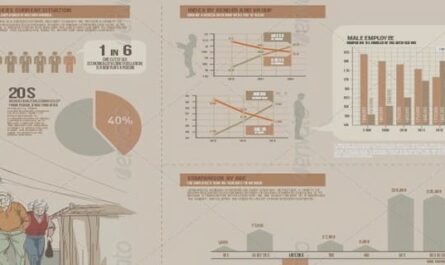Get Complete Project Material File(s) Now! »
The concept of total quality management
“Total quality management (TQM) is a business approach that focuses on improving the organisation’s effectiveness, efficiency and responsiveness to customers needs by actively involving people in process improvement activities. The achievement of business or organisational excellence is at the core of TQM (Porter and Tanner 1996:1).
According to Freed and Klugman (1997:ix-xi), by the 1980’s, United States companies awoke to find they could not survive unless they changed their ways of conducting business. Products made in the US were falling behind others in quality, especially those made in Japan.
After World War 11, the United States business and industry had the largest market, the best technology, the most skilled workers, the most wealth, and the best managers of the industrialised countries. With all of these advantages, it was University of Pretoria etd – Ferreira, M (2003) easy for American business and industry to succeed without giving much thought to continuous improvement of products and services.
At the same time, Japan was intent on improving its economy through manufacturing and trade: Japan’s products, however, were inferior to American products. In an effort to improve their status in the marketplace, Japanese companies worked together to acquire information on foreign companies. They also invited W Edwards Deming and Joseph M Duran, two of the pioneers in the
continuous improvement movement, to conduct training courses on statistics and management for quality improvement.
Japanese companies embraced Deming’s and Juran’s theories, and added their own ideas to continuous quality improvement and these best practices propelled Japan into the position of world marketplace leader by the late 1970’s. By the 1980’s, United States companies awoke to find they could not survive unless they changed their ways of conducting business. Products made in the US
were falling behind others in quality, especially those made in Japan.
Chapter 1: Introduction
1.1 Introduction
1.2 Definitions and rationale
1.2.1 The concept of total quality management
1.2.2 Quality models and their application in the higher education sector
1.2.3 Self-assessment principles and practices
1.2.4 The growing use of quality models in the public sector
1.2.5 The benefits of using quality models
1.2.6 The structure of the higher education sector in South Africa
1.2.5 Quality challenges facing higher education institutions
1.3 Research problem
1.4 Objectives of the study
1.5 Demarcation and delimitation of the study
1.6 Importance of the study
1.6 The basic research approach
1.7 Structure of the study
1.9 Summary
Chapter 2: The higher education sector with specific reference to South Africa
2.1 Introduction
2.2 The changing role of higher education institutions
2.2.1 Entrepreneurial universities
2.2.2 Enterprise universities
2.3 Higher education institutions need to adapt
2.3.4 Corporate governance, risk management and continuous improvement
2.4 Unique characteristics of universities
2.5 Challenges facing higher education institutions
2.6 Organisational trends impacting on higher education institutions
2.6.1 Innovation
2.6.2 Creative thinking
2.5.4 Competitive strategic planning
2.6.4 Learning organisations
2.6.5 Knowledge management
2.6.5.1 Research
2.6.5.2 Teaching and learning
2.6.5.3 Community service
2.7 The higher education sector in South Africa
2.8 A brief history of South African universities
2.9 Legislation pertaining to the higher education sector inSouth Africa
2.9.1 The South African Constitution
2.9.2 National Commission on Higher Education
2.9.3 White Paper 3 – A Programme for Higher Education Transformation, 1997
2.9.4. The Higher Education Act, Act No 101 of 1997
2.9.5 The National Plan for Higher Education
2.9.6 The Report of The National Working Group and the Response of the Department of Education
2.10 South African higher education structure
2.1O.1 The South African Council on Higher Education (CHE)
2.1O.2 South African Universities Vice-Chancellors Association (SAUVCA)
2.1O.3 The Centre for Higher Education Transformation (CHET)
2.1O.4 Higher Education Quality Committee (HEQC)
2.10.5 The South African Qualifications Authority (SAQA)
2.10.6 The National Qualifications Framework (NQF)
2.12 Summar
Chapter 3: A literature review of quality models
3.1 Introduction
3.2 The establishment of quality models
3.3. United States Malcolm Baldrige Quality Award (MBNQA)
3.3.1 Establishment
3.3.2 The MBNQA
3.3.3 Fundamental concepts of the MBNQA
3.3.4 The MBNQA criteria
3.4 The European Foundation for Quality Management (EFQM)
3.4.1 Establishment
3.4.2 Overview of the EFQM
3.4.3 The fundamental concepts of excellence
3.4.4 EFQM criteria
4.4.5 EFQM-RADAR process
3.5 South African Excellence Model (SAEM)
3.5.1 Establishment
3.4.2 The SAEM
3.4.3 The fundamental concepts of the SAEM
3.5.4 SAEM criteria
3.5.5 Scoring the SAEM
3.5.5.1 Enablers
3.5.5 2 Results
3.5.6 SAEM awards
3.6 Self-assessment
3.6.1 What is organisation self-assessment?
3.6.2. The self-assessment process
3.6.2 Self-assessment potential benefits list
3.6.4 Self-assessment approaches
3.6.4.1 An award simulation approach
3.6.4.2 A pro forma approach
3.6.4.3 A workshop approach
3.6.4.4 A questionnaire approach
3.6.4.5 A matrix chart approach
3.7 Quality models and the Balanced Scorecard (BSC)
3.7.2 Linking quality models to the BSC
3.8 Summary
Chapter 4: Quality models in the higher education sector
Chapter 5: Restatement of the problem, research objectives and hypothesis/propositions
Chapter 6: Research results and analysis
Chapter 7: Conclusions, recommendations and proposals for future research
References


